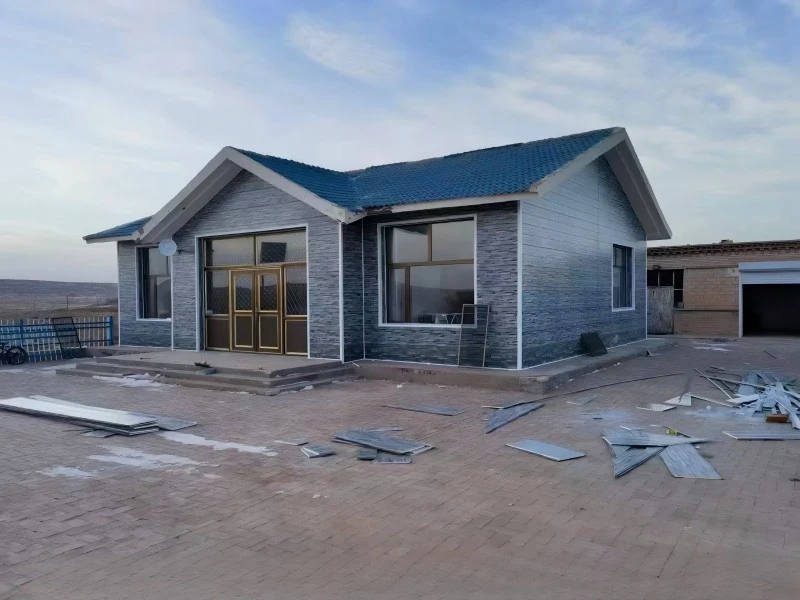Understanding the Importance of Moisture Protection for Exterior Walls
Dampness penetration is a critical concern for building proprietors and supervisors, as it can result in basic harm, form development, and decreased vitality effectiveness. When water enters outside dividers, it compromises the astuteness of the building, driving to exorbitant repairs and wellbeing dangers. Waterproof outside divider boards offer assistance moderate these issues by shaping a defensive boundary that successfully anticipates dampness from entering the building envelope. This not as it were shields the structure but moreover upgrades by and large vitality execution and life span.
The Consequences of Inadequate Moisture Protection
Without proper moisture protection, buildings are susceptible to various issues:
- Structural damage: Water can weaken building materials, leading to costly repairs.
- Mold and mildew growth: Excess moisture creates an ideal environment for harmful microorganisms.
- Decreased energy efficiency: Wet insulation loses its effectiveness, resulting in higher energy bills.
- Aesthetic deterioration: Water stains and peeling paint can mar a building's appearance.
Benefits of Waterproof Exterior Wall Panels
Waterproof exterior wall panels offer numerous advantages beyond moisture protection:
- Durability: These panels are designed to withstand harsh weather conditions and last for many years.
- Insulation: Many waterproof panels provide excellent thermal insulation, enhancing energy efficiency.
- Fire resistance: Non-flammable options are available, improving building safety.
- Aesthetic versatility: Panels come in various colors and patterns to suit different architectural styles.
Features and Advantages of Modern Waterproof Exterior Wall Panels
Today's waterproof exterior wall panels are engineered to provide superior performance and versatility. Let's explore some of their key features and advantages.
Customizable Designs for Enhanced Aesthetics
One of the standout features of modern waterproof exterior wall panels is their customizability. Manufacturers provide a broad selection of colors, textures, and patterns, enabling architects and designers to craft distinctive and visually striking facades. This level of flexibility ensures that while the panels provide superior moisture protection, they also enhance the building's aesthetic appeal. As a result, building owners can achieve both functional and decorative value, meeting the needs of both durability and design without compromise.
Advanced Materials for Long-Lasting Performance
Waterproof exterior wall panels are typically made from high-quality materials such as:
- Metal (steel or aluminum)
- Fiber cement
- High-density polyethylene (HDPE)
- Composite materials
These materials are chosen for their solidness, resistance to weathering, and capacity to keep up their waterproof properties over time. The result is a long-lasting arrangement that gives solid dampness security for a long time to come.
Energy Efficiency and Insulation Properties
Many waterproof exterior wall panels are designed with energy efficiency in mind. They often incorporate insulation materials or air gaps that enhance the building's thermal performance. This dual functionality not only protects against moisture but also helps regulate indoor temperatures, potentially leading to significant energy savings.
Installation and Maintenance of Waterproof Exterior Wall Panels
Proper installation and maintenance are crucial for maximizing the effectiveness of waterproof exterior wall panels. Let's delve into best practices for both aspects.
Professional Installation for Optimal Performance
While some DIY enthusiasts might be tempted to install waterproof exterior wall panels themselves, professional installation is highly recommended. Experienced installers ensure that:
- Panels are correctly aligned and securely fastened
- Proper sealants and flashing are used to prevent water infiltration at joints and edges
- Ventilation requirements are met to prevent moisture buildup behind the panels
- The installation complies with local building codes and manufacturer specifications
Maintenance Tips for Long-Term Protection
While waterproof exterior wall panels are generally low-maintenance, some periodic care can help extend their lifespan and maintain their effectiveness:
- Regular inspections: Check for any signs of damage, loose panels, or deteriorating sealants.
- Cleaning: Gently clean the panels according to manufacturer recommendations to remove dirt and debris.
- Prompt repairs: Address any issues, such as cracks or gaps, as soon as they're noticed.
- Resealing: Periodically reapply sealants to joints and edges to ensure continued waterproofing.
By following these maintenance practices, building owners can ensure that their waterproof exterior wall panels continue to provide excellent moisture protection for years to come.
Conclusion
Waterproof exterior wall panels represent the pinnacle of moisture protection for buildings. Their combination of durability, aesthetic versatility, and energy efficiency makes them an ideal choice for both new construction and renovation projects. By creating a robust barrier against water infiltration, these panels help preserve the structural integrity of buildings while enhancing their appearance and performance.
As the building industry continues to evolve, waterproof exterior wall panels are likely to play an increasingly important role in creating sustainable, resilient structures. Their ability to provide long-lasting protection against moisture while offering additional benefits such as improved insulation and fire resistance makes them a valuable investment for any property owner.
If you're considering upgrading your building's moisture protection or are planning a new construction project, waterproof exterior wall panels should be at the top of your list. For more information about our range of high-quality waterproof exterior wall panels and other building materials, please don't hesitate to contact us at info@sdqsc.com. Our team of experts is ready to help you find the perfect solution for your specific needs.